Aussie YouTube sensations taking world by storm, and raking it in
Local filmmakers are taking the world by storm, with their YouTube offerings putting them on the fast track to fortune.
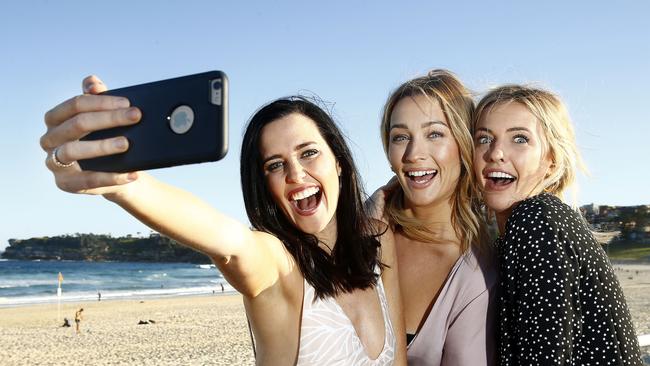
Rob Nixon and Troye Sivan could hardly appear any more different. One is 33; the other 10 years his junior. One is an amateur chef; the other an actor and chart-topping musician. But the young Australians do have a thread that ties them inextricably together: they’re part of a booming generation making a living carving out modern, and often lucrative, careers through video-sharing site YouTube.
While YouTube is not a new concept — it was established in 2005 and sold to Google a year later — Australian content on the platform has only started to generate a global appetite during the past 12 months. The number of local channels boasting more than a million subscribers has doubled since this time last year.
A growing group of young Australian stars — from musicians to make-up artists, chefs to gamers, scientists to comedians and even massage therapists and car modifiers — is engaging daily with millions of fans worldwide, revelling in the fame and raking in cash through brand sponsorships and advertising revenue.
Gone are the days of traditional cultural venues such as the Sydney Opera House being the singular home of the classical art forms. Now it, and similar venues, are regularly sold out by YouTubers to wide-eyed millennials. Today VidCon — the world’s biggest video conference — opens for the first time in Melbourne. Its advent and popularity in Australia sends a clear signal: the rules of fame have changed.
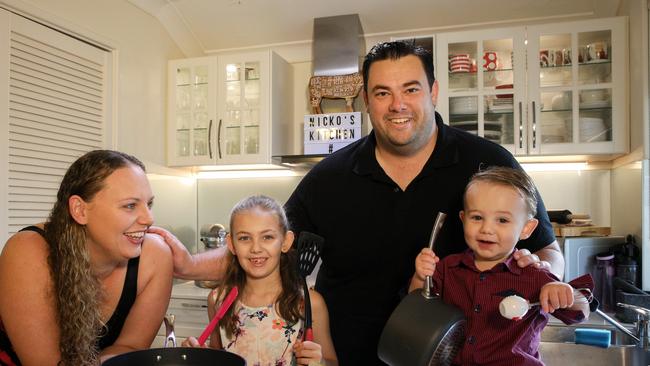
Nixon created a cooking channel in 2008 at the age of 24, and was stunned by the audience potential of the platform after receiving an email from Iraq, where Australia at the time was at war. “At first I thought the email might have been from Australian troops there on duty, but then I found out (the viewers) were Iraqi-born and raised and, thanks to my lamington-making tutorial, making and trying Australian food for the first time,” Nixon says.
“That’s when the penny dropped. If I could reach Iraq when we were at war, then think of the broader audience potential. From then on I started taking YouTube seriously.”
Nine years later Nixon is at the helm of one of Australia’s most successful YouTube channels, Nicko’s Kitchen, which boasts more than 1.1 million subscribers and a broader social media following of almost two million. Co-run by his wife, Jess, the channel generates enough income to sustain their family’s lifestyle, and is aimed at cloning popular food trends at home.
“We just want people to get back into the kitchen and not see cooking as a chore,” Nixon says. “If you’ve got to do it three times a day, you may as well enjoy it.”
Sivan, whose channel boasts more than four million subscribers, is widely considered Australia’s most successful YouTube star for transforming his online popularity into a blossoming music and acting career, which has included a role in X-Men Origins: Wolverine and multiple chart-topping singles.
In 2015, a group of YouTubers led by Sivan did a sold-out tour of arenas across the country and, later this month, hugely popular British YouTuber Daniel Middleton is touring Australian stadiums at $79 a ticket.
The 25-year-old professional gamer is hugely popular for his narration of gaming experiences, particularly of computer game Minecraft, and his YouTube videos have garnered billions of views — the most popular video with 40 million views alone. He set a world record last year for amassing the most views for a Minecraft channel — 7.9 billion. Middleton last year placed seventh on Forbes’ social influencers list and has a reported annual income of $2 million.
Tama Leaver, an associate professor of internet studies at Perth’s Curtin University, says there is now an entire generation that has “lived and breathed” the YouTube phenomenon.
“This is a group for whom the idea of being in front of a webcam is not scary,” says Leaver. “The idea that creating ‘content’ is something that happens naturally is something they’ve done as a social process since they were 13 at least.”
Five Australian channels leading the pack include Mighty Car Mods, a DIY car modifications channel run by Blair Joscelyne and Martin Mullholland with 2.4 million subscribers; comedian Natalie Tran’s Community Channel (1.8 million); gaming personality Elliot Watkins’s Mr Muselk (2.1 million); MyCupcakeAddiction, the three-million-subscriber-strong channel run by Gold Coast’s Elise Strachan; and Wengie, the country’s fastest-growing channel, which is run by Wendy Huang and which stands at more than eight million subscribers (it has grown by seven million in the past 18 months).

Wengie is wildly popular for her mix of content, which includes life hacks (tips for day-to-day problems), DIY experiments, fashion and crafts, alongside sketch-based videos and more personal vlogs (video blogs). The 31-year-old has a background in marketing, which she says helped her diversify her social media presence and translate it into a lucrative online existence.
Dmitri Alexander, a 41-year-old from the Gold Coast, inhabits one of the more esoteric yet highly profitable spaces of YouTube: ASMR. Autonomous sensory meridian response videos feature whispering and “sound creation”, which includes brushing or tapping objects across binaural microphones, to help people relax and get to sleep. Alexander’s channel, MassageASMR — the nation’s biggest channel in the genre, sitting at more than 500,000 subscribers — mostly features the Queenslander giving or receiving massage.
“I’ve been into the ASMR thing for longer than ASMR had a name,” Alexander tells Review. “I used to actively look for quiet massage videos on YouTube and noticed so many others were crying out for them, so I thought: ‘Why don’t I just make them myself?’ ”
Alexander’s most popular video, which has been viewed more than 12 million times, features 10 hours of him making tapping and brushing noises without speaking. Earlier this month, he was invited to present on the topic at Sydney’s Powerhouse Museum for the This is a Voice exhibition.
“ASMR is an experience which gives some people a great feeling called tingles … almost like a gentle massage to your head or body, but much better,” Alexander says.
“It has a very calming effect and I’m happy to be helping people relax.”
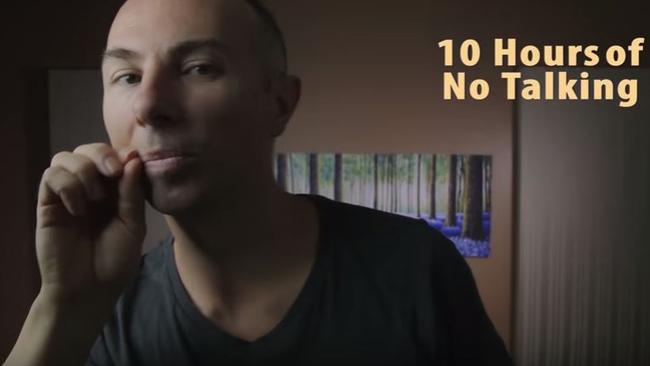
At nearly 10 million subscribers, HowToBasic is Australia’s best-subscribed channel, and likely the strangest. The famously anonymous creator lures viewers in, promising to demonstrate how to do something before madness ensues, typically with eggs being thrown and entire rooms being trashed.
While the US and British YouTube markets have a well-established relationship with the business sector, Australian companies are perceived to be behind the eight ball when it comes to the site’s advertising potential.
Lana Kington, a 27-year-old Sydney model who forms one-third of successful musical comedy trio SketchShe, says while the Australian YouTube scene is blossoming, it has a long way to go. “The culture of online entertainment and day-to-day engagement with social influencers simply isn’t as big here as it is in the US,” Kington says.
Curtin’s Leaver echoes that sentiment. “If we look at the US, obviously commercialism is probably more built into the US DNA,” he says. “The idea of commercialism is not abhorrent any more.
“I think that was the last step, that while people were comfortable with sharing socially, it took a little while for them to realise that actually making money wasn’t inauthentic or dirty. For Australians who are trying to make it, it’s not such a bad thing if Australian companies aren’t advertising, because what we do see is a lot of Australian YouTubers have sponsors from outside of Australia, because their viewership is global, not nationally based.”
SketchShe, whose other members are Shae-Lee Shackleford and Madison Lloyd, was quick to capitalise on the viral success of its iPhone-filmed videos featuring the girls lip-synching to the likes of Mariah Carey and Queen from inside a car.
Their YouTube work has led them to interviews on Ellen, the Ellen DeGeneres show and Good Morning America, and, while their channel is fast approaching one million subscribers, their videos have been watched an astonishing 300 million times.
“We are fortunate enough that SketchShe is now our main source of work and income,” says Kington. “We recently collaborated with Viacom and (American TV program) Lip Sync Battle and have been featured creators at Fanfest, Vidcon and Comic-con. The three of us have also created our own web series with help from Screen Australia.”
Over the years, Nixon of Nicko’s Kitchen has been flown overseas to present at YouTube fan events, garnered major sponsorships and was invited to speak in front of former prime minister Julia Gillard in 2012 at a digital economy forum about his booming online business.
“When we put out videos, we’re still in total getting more eyeballs than the major television cooking shows are,” says Nixon.

Fellow Aussie YouTube star and beauty blogger Lauren Curtis, who started her channel in 2011 to document make-up trends, has been flown across the world to meet followers. She has also appeared in TV advertisements, had her face plastered on billboards and spoken in front of thousands at YouTube events.
“I come from a very small suburb in the Perth hills and would never ever have imagined I would have been able to experience even half of what I have,” the 24-year-old says.
“I don’t think I will ever be able to comprehend it all. I am eternally grateful for all that YouTube has given me.”
Three months after launching her channel, a video called How to Get Massive Lashes sent Curtis’s popularity through the roof. Almost overnight, people from across the world were tuning in for her make-up tips.
Her channel now boasts more than 3.6 million subscribers; there are 2.2 million likes on her Facebook page.

Derek Muller, the Sydney-born brain behind educational science channel Veritasium, quickly transformed from a university student/physics tutor to a presenter on the ABC’s Catalyst program and worldwide YouTube sensation after a video he made with a slinky went viral. “I was one of the early people to enter the science and education space so it was a good area and a good time for me to get into it,” says Muller, who now lives in Los Angeles.
With a subscriber base of more than four million, Muller collaborates with some of the biggest companies in the world. He was featured on Bill Nye’s latest TV series, Bill Nye Saves the World, and was invited to host the March for Science in Washington, DC in April this year.
“I always knew I wanted to be a filmmaker, but YouTube has come along at a perfect time for me to have this incredible career that I never knew could happen,” he tells Review. “Now there’s thousands of people like me who make their living through YouTube.
“The platform is a whole ecosystem and has changed people’s lives. It’s huge.”
While the latest figures from Google reveal 15.5 million Australian visit the video sharing site and watch an average streaming time of 10 hours a month, most local creators say Aussie audiences would not be enough to sustain their livelihoods. The majority of their viewers are in the US and Britain.
“Forty per cent of my audience is based in the US and there’s another big percentage in Canada, so it made sense for me to move to LA,” says Muller. “I would just chalk it up to the raw numbers.
“People in Australia are engaging with YouTube, but it’s just a smaller country ultimately. I was seeking bigger challenges and opportunities and so I moved to the global hub.”
Fellow Aussie science filmmaker Brady Haran says that, while his viewership is dominated by American and British viewers, Australians have always made up a fair proportion of his audience.
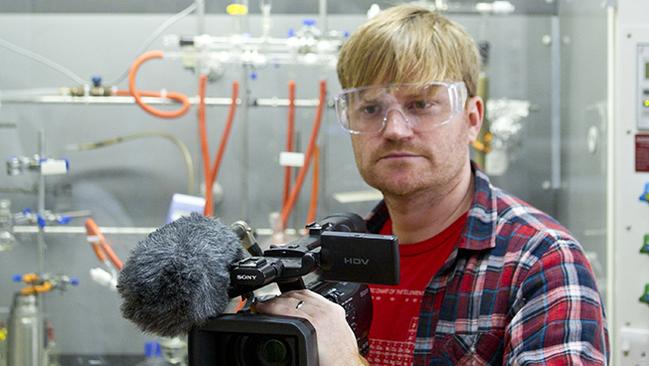
“Australian viewers are always near the top of the list,” says Haran, whose video How to Scientifically Cut a Cake has been viewed more than 15 million times. “Australia is certainly punching above its weight.”
The British-based former Adelaidean runs multiple YouTube channels with a total of 4.5 million subscribers and more than 500 million views, and is also the co-founder of popular podcast Hello Internet.
“I know people sometimes joke about cat videos and things like that, but from my experience YouTube really likes to encourage the creation of smart and educational films,” Haran says.
VidCon, the popular Californian video convention, will bring to Melbourne today some of the biggest names on the internet: British musician and vlogger Dodie Clark, comedian Grace Helbig and one half of Vlogbrothers Hank Green, among others.
Leaver says there is a “big appetite” for YouTube conventions in Australia. “[Middleton] has sold out across Australia and all he’s doing is Minecraft shows in stadia,” he says.
The prevailing view is, however, that a career on YouTube is not as easy as it looks: remaining creative, continuing to make regular content and sustaining a successful YouTube channel requires a lot of hard work.
Melbourne musician Andie Isalie, 20, says the music sector of YouTube is brutal. “It’s definitely a game to play and if you learn how to play that game you can become really successful,” says Isalie, who has amassed millions of views for her song covers and connection to British star Clark.
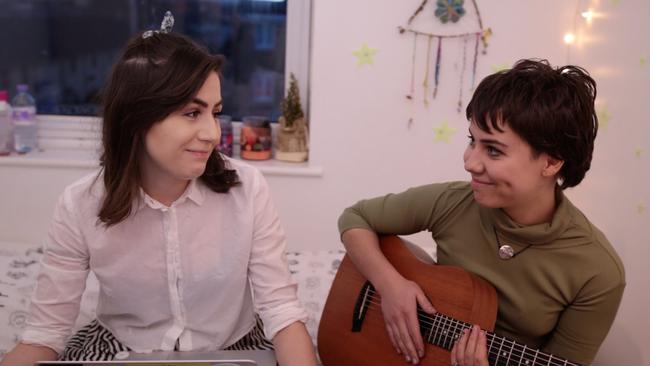
“You’ve got to look at your demographic and make sure you’re catering to them, and uploading videos at the right time given the location of your followers. To stay relevant you also have to be constantly uploading new content across all platforms — it’s exhausting.”
Muller agrees. “It’s the kind of job where you’re always working and you’re never working, that’s the life of a YouTuber,” he says. “It’s so hard to establish a balance between when are you living and when are you working, you have to be so self-disciplined. For me there’s a lot of travel involved and no real schedule or routine, so sometimes I’m working 18-hour days and sometimes there’s not much on.”
Leaver says the most impressive thing about the YouTube generation is its entrepreneurial intelligence. “The savviness with which (this generations) uses all sorts of platforms, including Instagram and Snapchat, in conjunction with each other is one of the reasons why their content works so well,” he says. “What they’re not is beholden to the rules of a single platform, which significantly increases their ability to make a living off this kind of work.”
VidCon runs at Melbourne’s Convention & Exhibition Centre today and tomorrow
***
GETTING A RESPONSE
ASMR, or Auto Sensory Meridian Response, constitutes a thriving niche genre of YouTube videos designed to help viewers de-stress and get to sleep. The term was coined in 2010 to colloquially describe the euphoria experienced by some viewers, characterised by tingling sensations which typically start on the scalp or neck and move down the spine. To induce this response, video creators whisper, tap, brush or shake objects to produce calming noises and even role-play massaging or hair brushing. This is often recorded through binaural microphones so each ear can be isolated and focused on.
Because the phenomenon is relatively new there is little scientific research or quantifiable evidence about what it is and how many people experience it.
In 2015, two psychology researchers at Swansea University in Wales published the first peer-reviewed research study to try and define and classify ASMR. The surveyed 475 people who report experiencing “the tingles,” and found a majority sought out ASMR videos on YouTube to help them sleep and deal with stress. Most viewers told the survey they felt better for a significant amount of time after watching the videos, including those who scored high on a survey for depression. Some of the subjects who suffered from chronic pain also said the videos decreased their symptoms.
Maria Viktorovna, a 31-year-old Russian expat who lives in the US, is one of the most successful ASMR content creators with her channel Gentle Whispering ASMR. Over one million dedicated subscribers return again and again to watch her assume simulated roles — librarian, stylist, hairdresser — and perform simple tasks — typing, writing, flipping through magazines, ironing and folding towels.
Critics of the genre find fault with the sexual nature and “soft porn” look of some ASMR role play videos, but the vast majority of ASMR content is innocently created to simply help people relax without any sexual connotation.
Emily Ritchie

HOW TO CHANNEL THE CREATIVE IMPULSE
I was caught in a perfect storm of narcissism and procrastination the day I started my YouTube channel. It was 2011, I was 16 and I was avoiding my homework like the plague. And, similar to most teenagers, I craved attention. Over the years my channel has been a place for me to share versions of my favourite songs, as well as a few originals and vlogs, in the hope of receiving feedback from friends and strangers alike about where to improve and what I might be doing well.
Music has always played a significant role in my life, and while I have a full-time position on this newspaper, it’s nice to have YouTube as a further creative outlet.
While I may look back at my oldest videos and cringe, largely due to the horrible front-fringe I sported in my late teens, I am grateful I had the confidence to publish videos of myself singing on the internet.
Still, as much as I enjoy the site, I have found it to be cutthroat and merciless. About 1.5 billion people interact with YouTube every month and hundreds of hours of footage is being uploaded every day. This makes it exciting, but also incredibly tough to stand out. Timing is everything.
If you want to gain traction, upload a cover of a song within days of the song’s release. This increases your chances of being seen in the top search results. (I did this with a James Blake cover and quickly garnered almost 10,000 views.)
It’s all a game really, perfect for a narcissistic procrastinator.
Emily Ritchie

To join the conversation, please log in. Don't have an account? Register
Join the conversation, you are commenting as Logout